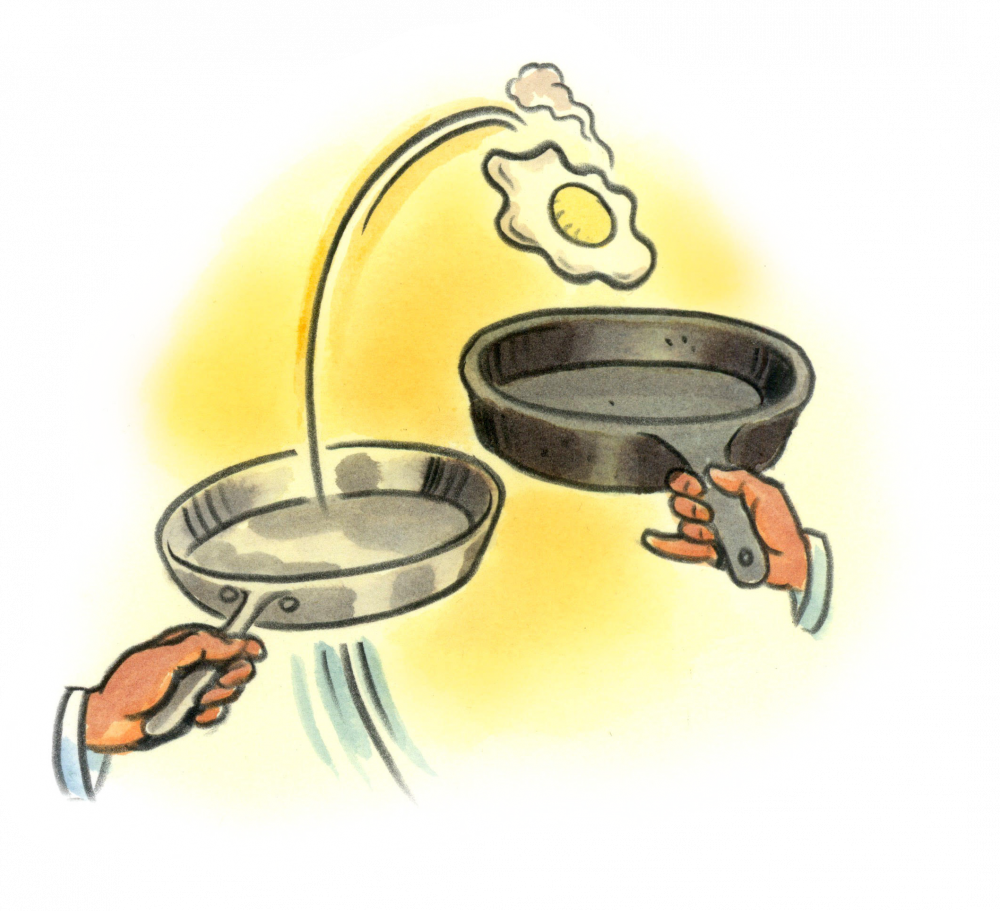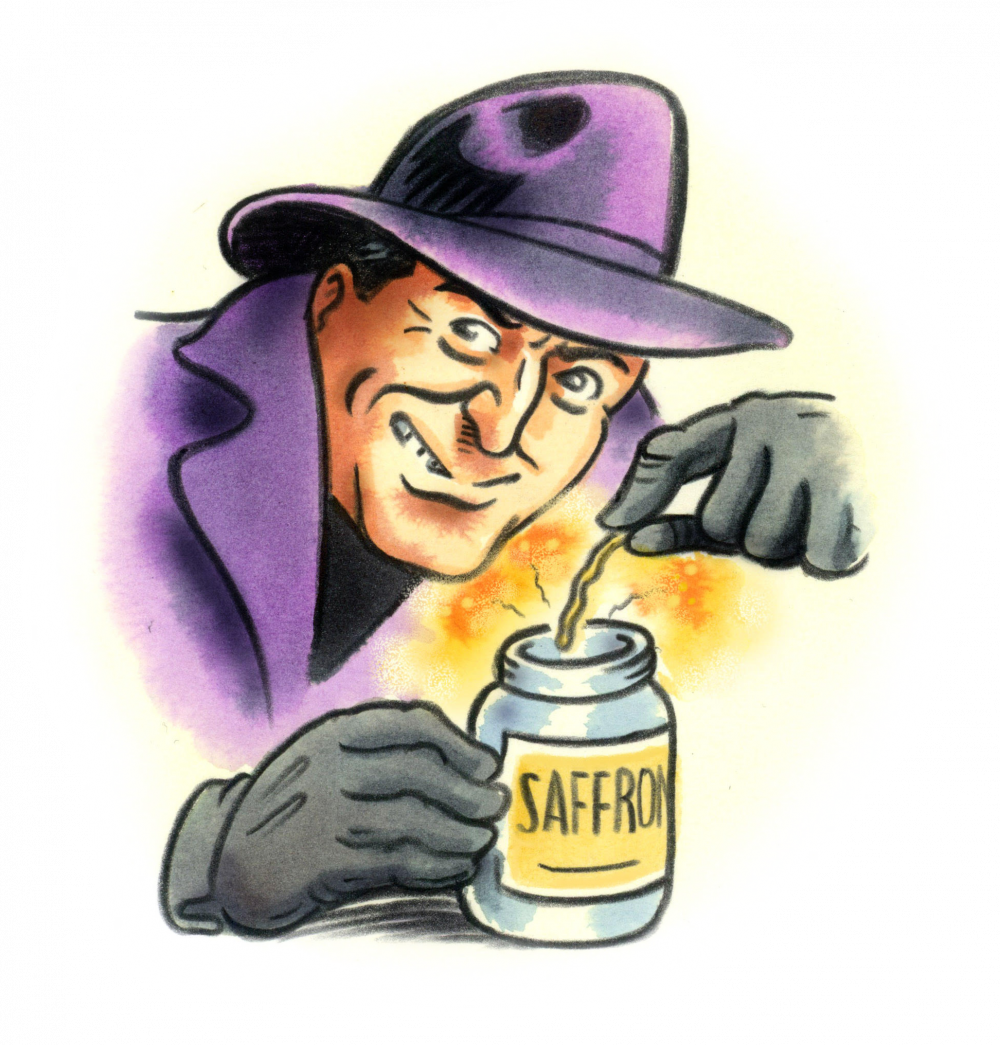
Pan Handling
After her husband struggled to make eggs in a cast-iron skillet, Elizabeth O’Neil, of Warwick, Rhode Island, wondered if it simply isn’t the right pan for the job. Would carbon steel be a better choice?
At Milk Street, we’re fans of both cast-iron and carbon-steel pans, but they aren’t always interchangeable. Cast-iron pans are made from molten iron that has been poured (or “cast”) into a mold. New cast-iron pans have a rough, pitted surface that requires seasoning, a process that coats the pan with heated fat or oil to produce a nonstick-like surface. Carbon-steel pans are made from an alloy of iron and carbon that is rolled into sheets and stamped into shape, yielding a more lightweight pan. Cast iron heats more slowly and retains heat longer; carbon steel heats and cools more quickly, ultimately giving cooks more control over temperature. Cast-iron pans are our choice for foods that require even, concentrated heat: searing steaks or crisping noodles, for example. But for items that we want to cook quickly—such as eggs and sautés—we often reach for carbon-steel pans. They also have a smoother surface, so they perform better with delicate foods and are less likely to promote sticking. As for how each performs when cooking eggs, it comes down to style of cooking. In our tests, both pans performed well, but temperature is key. For those who prefer to cook their eggs low and slow, carbon steel is the better choice. Over low heat, eggs tended to stick to the porous surface of even well-seasoned cast-iron skillets. Conversely, at higher temperatures, the cast-iron performed well, while the carbon-steel pan heated too quickly to properly fry an egg. That said, with sufficient oil—we used 1 teaspoon—both skillets got the job done.
A Seasoned Debate
Amy Howard, of Raleigh, North Carolina, asked for advice on when to use white pepper versus black pepper.
Both black and white peppercorns come from the same plant—the same berry, in fact. The difference is in when they are harvested. Black peppercorns
are made from unripened green peppercorns that are harvested and dried until their skins shrivel and darken. White peppercorns are produced from fully ripe peppercorns whose red outer skins are removed, leaving behind a milder-tasting version of the spice. Compared to black pepper’s trademark pungency, white pepper is earthier, with a more complex flavor. While black pepper is more common in American kitchens, white pepper plays a large role in many cuisines around the world. In French and Swedish cooking, it often is added to light-colored dishes for better visual appeal. It also is an indispensable part of the Asian pantry; it pairs particularly well with fish sauce, soy sauce and palm sugar, amplifying their sweetness. In general, use black pepper when you want bold pops of spice. But if you want the flavor of black pepper without its heat or color, use white. However, its flavor can be more fleeting than black pepper’s, so when possible it’s best to grind it fresh—especially since its aroma can be just as important to a dish as its flavor.
Unraveling Saffron Threads
When Deana Chan, of Sacramento, California, tried cooking with saffron, the dish had a strange chemical taste. She wants to know what went wrong.
Cooks around the world prize saffron for its complex flavor, as well as the golden hue it lends dishes. But when cooking with it, it pays to shop wisely. Much of the “saffron” available isn’t actually saffron at all, but a counterfeit version of this luxury spice. True saffron tends to be expensive—and for good reason. These crimson threads are in fact the stigmas of a crocus, and they must be hand-harvested during a short growing season. It takes about 50,000 flowers to yield just 1 pound of dried saffron— hence the hefty price tag and the proliferation of imitations. Safflower petals (which are sometimes labeled as “yellow saffron” or “American saffron”) or dyed corn silk often are passed off as the real thing. At a glance, the visual distinctions between real and fake saffron are subtle. True, unadulterated saffron should not be uniformly red (if it is, it’s a sign that the supplier dyed it). Rather, it should be a deep crimson color, with yellow or orange tips. At best, fake saffron is f lavorless; at worst, it will have a bitter metallic taste. Real saffron should have a pronounced floral scent to match the floral, earthy notes that it adds to dishes. Another way we’ve found to test saffron’s authenticity? Put a pinch of it into a glass of cold water. Pure saffron will slowly release its color; after 15 minutes, the water should have a yellow tinge. If the water immediately turns bright red, that suggests the saffron has been dyed.





